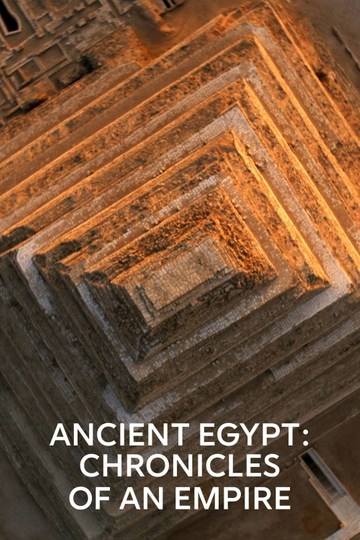Season 1 Plot
Each episode highlights an aspect of this fascinating culture before the extraordinary final act. We explore the Nile, the gods and kings, the great metropolises, the death cult, the pyramids, the women of ancient Egypt, wars, and finally, the downfall of the first advanced civilisation. A team of international experts presents the events and developments in Egyptian history. Egyptologists, historians, and physicians provide insights into society, clear explanations of the Egyptians’ world view, how they made perfect mummies and planned their cities, and detail the latest findings on pyramid building.
Ancient Egypt: Chronicles of an Empire Season 1 aired on October 5th, 2022.
Season 1 Episodes
1. Lifeline Nile
The Nile is Egypt’s lifeline. Its water transforms parched soils into productive farmland. The first houses and settlements are built from its mud. Yet, how did it all begin? From 5000 BC, desert nomads began to settle in the Nile Valley. Instead of wandering around as hunter-gatherers, they now practice agriculture and animal husbandry. The foundations for Egyptian civilization. As early as the 1st Dynasty, the land along the Nile is divided into smaller administrative units. But Egyptian administration would not have worked without another groundbreaking invention - writing - in the form of elaborately painted hieroglyphics. Yet, the pride and joy of the Egyptians is the Nile. It’s the country's most important trade route. Without this river, one of the most fascinating advanced civilizations in history would never have existed.
2. Gods and Kings
Gods and Kings rule over ancient Egypt. They are omnipresent, leading the country into deep crises and to unimagined greatness. Episode 2 of the documentary series tells their story. Around 5000 years ago, the Egyptians created the first state in history. A great empire on the Nile, which could only be held together by the just rule of the pharaoh and the belief in a common world of gods. Researchers list 31 pharaonic dynasties and over 1500 gods and goddesses. For 3,000 years, they ensured consistency so that the people on the Nile would prosper. Until the empire perished with Cleopatra, the last pharaoh. Yet, Ancient Egypt leaves behind much more than magnificent temples and impressive pyramids. Some inventions or ideas are cornerstones of state and society even today.
3. Metropolises
In the realm of the pharaohs, some of mankind's oldest and largest cities are emerging. An urban revolution that has long been overlooked: For unlike the impressive stone temples, most traces of settlement have disappeared today. But research is gaining ever deeper insights into the urban life of the ancient Egyptians. The first major metropolis, Hierakonpolis, the ancient capital of Upper Egypt, emerges around 3,500 years B.C., when several villages coalesce into the oldest known urban settlement in Egypt. A city built of clay, the Egyptians' most important building material. However, for archaeologists, the perishable nature of the building material is a challenge. Thanks to modern methods, they can now form an astonishingly precise image of the structure of these cities and the everyday life of their inhabitants.
4. Cult of the Dead
Ancient Egypt is famous for its cult of the dead. Tomb complexes, mummies and fabulous treasures fire people's imagination to this day. Back then, it played a central role for the Egyptians. Episode 4 of ANCIENT EGYPT – Chronicles of an Empire tells the story behind this cult. Long before King Narmer united Upper and Lower Egypt for the first time around 3100 BC, the people along the Nile are burying their dead in the desert sand. They observe that a corpse does not decompose and that the body is preserved. This observation is the basis for a cult of the dead that has lasted for thousands of years. It is based on the belief that eternal life in the hereafter is only possible via a preserved body in this world. The documentary traces the development and the embellishment of the cult of the dead.
5. Pyramids
Nothing represents the unique advanced civilization of ancient Egypt more than the pyramids. Much about them is still a mystery to researchers. Episode 5 of ANCIENT EGYPT – Chronicles of an Empire traces the history of Egyptian tomb architecture. We show how Egyptian tomb architecture evolved over the millennia. The journey begins about 5,000 years ago with the royal tombs in Abydos, where the first rulers of Egypt were buried in underground complexes. They are covered by a mound of earth, from which mastabas develop - impressive brick buildings. The climax of this development is the construction of the Pyramid of Khufu 4,500 years ago. With their pyramids, the Egyptians created monuments for eternity - and in the end, they actually became immortal.
6. Women and Power
Women in ancient Egypt held a special fascination, even for their contemporaries. They enjoy a form of equality unparalleled in the ancient world. For over 3000 years, women influenced the fate of Ancient Egypt. Episode 6 of our documentary series tells their story. Women already played an important role in the pantheon of gods - like the goddesses Hathor and Isis, whose legacy reaches into Christianity. In the mortal world, too, women may wield extraordinary power. Like the kings’ mothers, who take over the regency for their young sons and thus secure their throne. In addition, the film also tells the stories of famous women such as Nefertiti and Cleopatra. The fascination ancient Egypt continues to hold, is not only due to its great men. But also, to its cast of extraordinary women.
7. Wars
Ever since Upper and Lower Egypt were united by warlike means around 3100 B.C., the military played a major role in the empire on the Nile. Wars were seen as a legitimate means to maintain the divine order, to protect the borders of the empire, and sometimes to expand it. At times, Egypt dominated an area that stretched from Nubia to Libya and as far as Asia Minor. Expansion was made possible by new military technologies such as the chariot, which the Egyptians perfected. Yet, the documentary also shows how Egypt, in moments of military weakness, became the target of foreign invaders. During peaceful periods, however, the pharaohs maintained extensive diplomatic contacts with neighboring empires.
8. Downfall
How did Egypt climb to its last period of splendor under the Ptolemies? And why did the empire nevertheless fall under their rule? Downfall tells the story of how Alexander the Great occupied Egypt in 333 AD and became Pharaoh. After his early death, Alexander's friend and general, Ptolemy, founded a new dynasty in Egypt that sought to combine Hellenistic and Egyptian culture. The newly founded city of Alexandria became a cultural melting pot. Yet, while the Ptolemies flaunted wealth and luxury, the second half of their reign saw famine and revolts. The final Episode of ANCIENT EGYPT – Chronicles of an Empire shows that even the alliance of the last Ptolemaic ruler, Cleopatra, with the might of Rome could not save the empire. After 3000 years, Egypt's time was up.






































